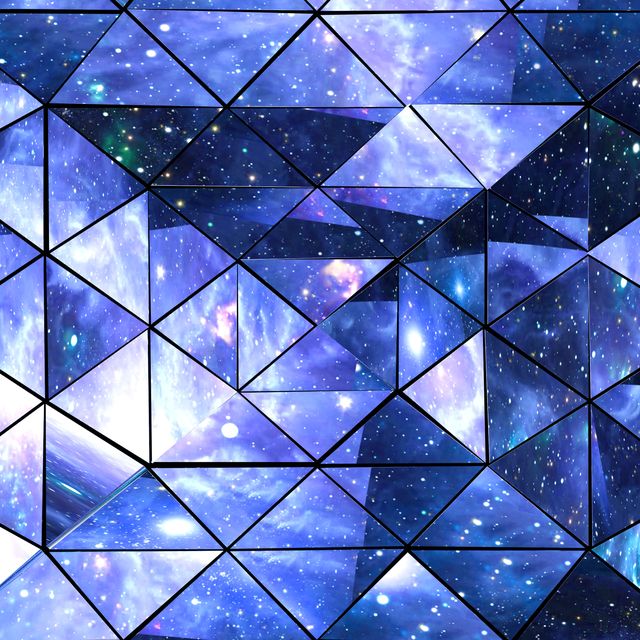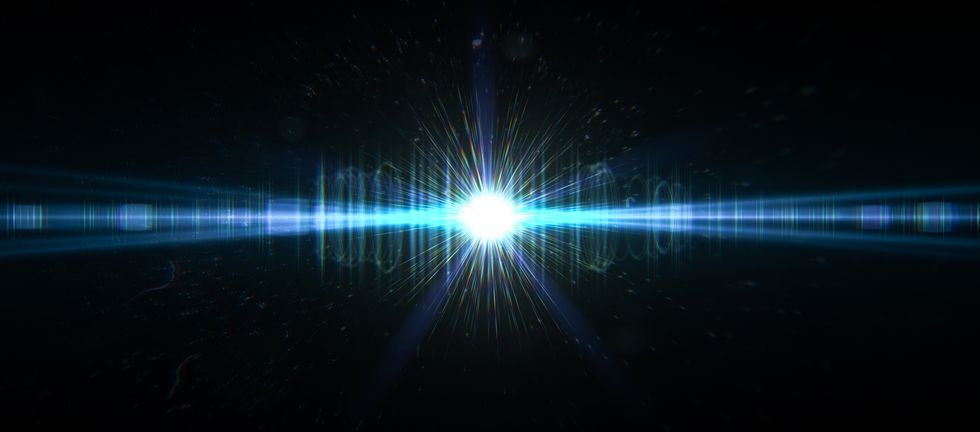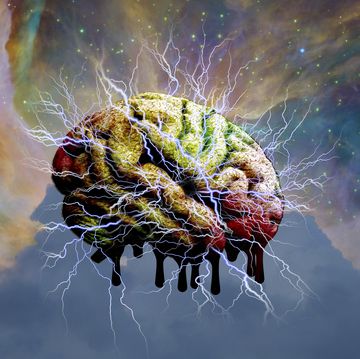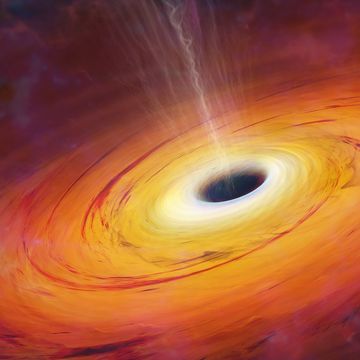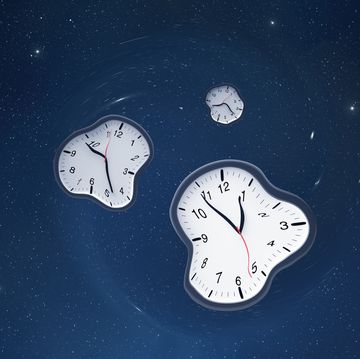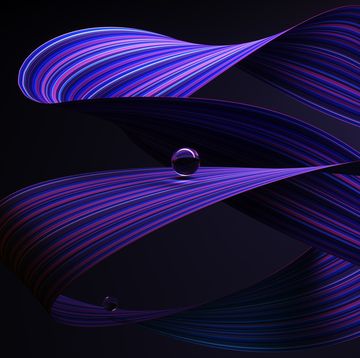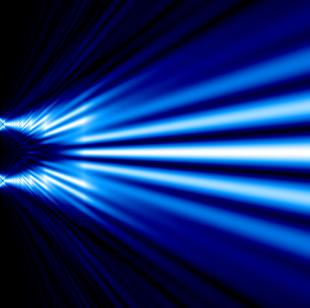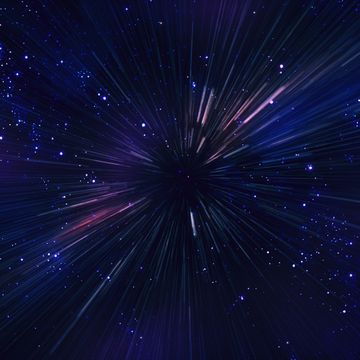- The Hubble constant is the rate of expansion of the universe. It helps cosmologists predict what the cosmos will look like in the future.
- The constant should be the same no matter what measurement is used, but it differs between measurement methods.
- The existence of a mirror world that exerts its gravity on our world would explain the difference.
Something’s strange in our cosmic neighborhood.
Astrophysicists have been struggling to figure out why a fundamental figure that has helped explain the expansion of our universe since its inception isn’t as reliable as once thought. Our data-gathering instruments, including both ground- and space-based telescopes, have improved over the years.
The problem their increasing accuracy reveals is that the Hubble constant—the predicted rate of expansion of the universe—changes depending on the method of measurement used. This is troubling because it implies that the universe could be smaller than currently thought, altering much of our knowledge about the cosmos.
But we don’t have to scrap the current model of the universe. Instead, there could be a mirror universe that’s just like our own, exerting its invisible influence on ours. Francis-Yan Cyr-Racine of the University of New Mexico in Albuquerque is trying to reconcile differing figures for the Hubble constant by using the idea of a “mirror universe.” It’s identical to our own, down to the subatomic particles, but its only interaction with our world is through its gravitational influence. Cyr-Racine’s research on the possibility of a mirror universe was published earlier this month in the journal Physical Review Letters.
What Is the Hubble Constant, Anyway?
The Hubble constant is a handy number for closely estimating the age of the universe—13.8 billion years. Since the Big Bang kick-started the universe as we know it, that initial burst of energy and matter has been expanding outward, and the rate of expansion is increasing, based on a host of observations of stars and galaxies. That’s why the Hubble constant isn’t really a constant. The name refers more to the fact that the universe expands at the same rate at every point, so the same value can be given to the expansion rate anywhere in the universe, at any given moment. Yet, the rate itself is accelerating, so the Hubble constant changes with time.
Cosmologists, who try to understand the development of our universe, derive the Hubble constant in different ways: They measure the speed of nearby objects in space; examine gravitational waves emanating from interactions between neutron stars or black holes; and they look at the amount of cosmic microwave background radiation (or CMB), a form of electromagnetic radiation filling the universe since the Big Bang.
Scientists employ radio telescopes such as NASA’s super-precise Wilkinson Microwave Anisotropy Probe to find this ancient radiation. This instrument is so precise that it has helped pin down not only the age of the universe, but also a number of other amazing discoveries, including the density of all atoms in the universe and the time when the first stars began to shine.
Exploding Stars Light the Way to a Stranger World
Intuitively, the Hubble constant should be the same no matter what measurement method is used, but weirdly, it’s not. For example, measurements of light from distant supernovae yield a slightly lower value than the CMB does.
Because supernovae are the brightest objects we can see in distant space, they are handy for calculating their distance as a function of their velocities as they recede away from us, Cyr-Racine tells Popular Mechanics. We can identify the location of the light from the supernovae as they speed away from us, and use that information to determine the universe’s expansion.
Over time, the disparate Hubble constant values have crept closer together because scientific measurements have become more precise—still, a puzzling gap remains. Calibrated supernova data indicate a Hubble constant that is about 8 percent higher than previously thought. “The supernovae data are telling us the universe should be 21.5 percent or so smaller than what the CMB [data is telling us], roughly speaking,” Cyr-Racine says. That’s definitely statistically significant enough to ask why, he adds.
The Subtle, But Powerful Influence of a Mirror Universe
Observations of stellar objects like stars and supernovae show that the universe is expanding ever more rapidly. It could be that the slower rate of expansion observed in extremely distant objects is causing a miscalculation of the Hubble constant. But that’s not likely. You can’t blame the measuring devices and methods, either, because these are ultra-precise nowadays, Cyr-Racine says.
The idea of the mirror world dates back to the 1970s, when Russian physicist Andrei Sakharov first pondered if there could be a universe where time is moving in the opposite direction to ours. Now, it could be an explanation for the Hubble constant problem. While it may sound unbelievable, the concept of a mirror universe would solve this important problem in particle physics, Cyr-Racine says.
Particle by particle, a mirror world would be just that—a mirror image of our own. But its existence would mean that it has its own forces too, like gravity. Like the wind rustling leaves in a tree, it could be unsettling our whole world—invisibly. Plus, a mirror world scenario allows for a faster expansion rate in our own universe, while barely altering the other precisely tested predictions of how our own universe works, like the amount of electromagnetic radiation in the universe. “So [the mirror world has] all the same particles, except they don’t really interact directly with our sector. The only way they see each other—these two collections of particles—is through gravitational interaction,” Cyr-Racine explains.
Cyr-Racine’s idea makes the cosmic microwave background radiation compatible with a smaller universe. It’s important to note that the more matter the universe holds, the higher the gravitational pull all of its objects experience. Everything in a crowded universe gets pulled closer together, and the universe becomes more compact.
The same is true in a solar system, Cyr-Racine explains. When objects have more mass, the solar system tends to be more closely packed. “So then if I want the bigger universe to be smaller, this means I need to add something to it; I need to add matter and energy to the universe that can interact gravitationally with everything else,” he explains.
However, you can’t play God and just start adding normal matter to the universe, he adds. Our instruments give us a very clear picture of the visible universe around us, and we know how much normal matter there is, including galaxies and stars. “So you need to add something else that is dark, that doesn’t interact with light or visible light,” Cyr-Racine says. That’s where the idea of an influential mirror universe comes in, messing with our Hubble constant.
There’s a certain beautiful symmetry to the laws of physics in the universe. If you scale the universe smaller, then the stars, galaxies, planets, and interstellar matter all have to be closer together. That dishevels a lot of known physics, including our data on the amount of cosmic microwave background radiation and the typical distance a photon, a particle of electromagnetic radiation, would have traveled in the early universe, Cyr-Racine says.
Particle physicists have been thinking for decades about what would happen if a mirror universe could interact with our own. “It could seem a bit crazy to say, okay, I got this mirror world that I cannot see. But even within the normal matter part of the universe, there’s a bunch of particles that we basically never see. Neutrinos are probably the best example,” Cyr-Racine points out.
Neutrinos have no electric charge and almost no mass, yet they exist as the most abundant particle in the universe. “Right now, there’s probably billions of neutrinos going through this room where I am, and from the sun, coming from space, but we don’t see them. We don’t feel them,” Cyr-Racine explains. “Their interaction rate with us is so small, it basically makes no difference. This is very similar for the mirror sector. If there was a mirror sector particle going through this room, I would just not know, because their interactions with our matter are zero or very, very small.”
A bit spooky, but if Cyr-Racine continues refining his mirror universe model, it may one day put to rest the mystery of the mismatched Hubble constants.
Before joining Popular Mechanics, Manasee Wagh worked as a newspaper reporter, a science journalist, a tech writer, and a computer engineer. She’s always looking for ways to combine the three greatest joys in her life: science, travel, and food.
